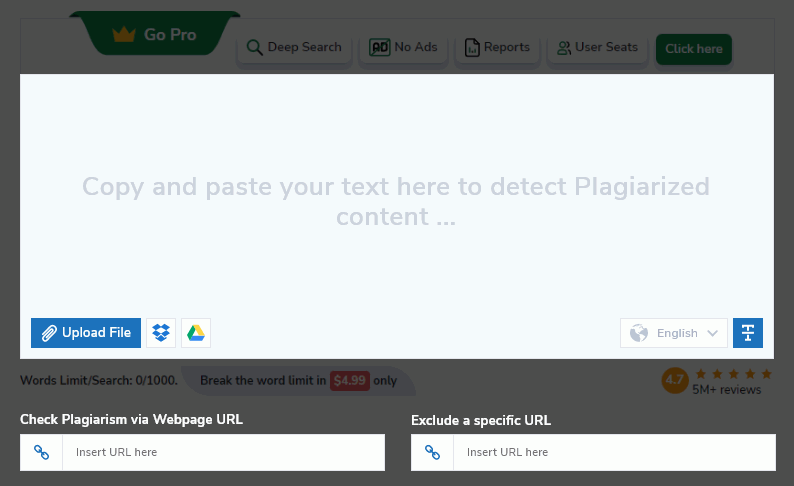Most Effective Ways to Detect Plagiarism for Teachers

Over the past few years, plagiarism has become a prevalent issue in the academic world. The easy access to online resources and tools has made it quite easy for students to copy work and use it in their assignments without proper attribution. The increasing number of duplication cases has become a concern for educators, due to which they need to be cautious while checking the work submitted by students.
Besides being immoral ethically, it is also considered a plague because it undermines the actual essence of education by devaluing the effort and hard work required to learn. Moreover, it also hurts the credibility of the educational system and reduces the value of academic achievements. That’s why it’s becoming more than crucial for teachers to take steps in the detection of plagiarism, as otherwise, they won’t be able to promote academic integrity.
In this blog, we will discuss how do teachers check for plagiarism. So, go through it till the end to find ways to fight against this nuisance!
Effective Ways to Detect Plagiarism – Tips for Teachers
Plagiarism detection isn’t an impossible task. In fact, teachers can utilize some effective strategies to identify duplication from students’ work. Here are some tips for teachers that can give them an easy way out to grade students wisely after catching the ones involved in plagiarizing assignments.
1. Use SmallSEOTools Plagiarism Checker
The best way to detect plagiarism for teachers is none other than the usage of an automated plagiarism checker by SmallSEOTools. This tool is designed to assist users, especially teachers, in identifying duplication in students’ work. Various platforms offer this utility, but the plagiarism checker for teachers available on this platform stands out due to its exceptional performance and features.
The teachers can find this tool in two modules: free and paid. In order to get access to the advanced features, you’ll need to pay for its premium plans, starting from $4.99. If you don’t wish to pay, you can use the free version, which also provides efficient results but with some limitations.
For instance, you can test replication from a text of no longer than 1000 words in one go with the free module. So, if your student’s assignment consists of more than 1000 words, then you’ll need to divide it into parts to check it for free.
This tool doesn’t involve any hassle as it has a user-friendly interface. The simple steps given below can help teachers run a plagiarism test on the work submitted by students.

Step # 1 – Upload Content
Paste the text that you wish to check in the given box. Alternatively, you can also upload the file containing text from your device or cloud storage account.
Step # 2 – Exclude a URL (Optional)
If you want to exclude some URLs, you can enter them in the given field.
Step # 3 – Hit the Button
Finally, you need to click the button to initiate the process.
Step # 4 – Download PDF Report
The tool will take a couple of seconds to analyze your text and identify the instances of duplication. You can save the report by clicking the download button.
2. Check Quotation Marks and Citations
Mostly, the institutes properly guide students about the citation style they need to use in their assignments. If you have also given such guidelines to the learners, but their work involves a mixture of different citation styles, such as APA, MLA, and Chicago, then it could be a red alert for plagiarism. In order to effectively check whether a student has plagiarized, you can cross-check the quoted text with the cited links. In case the ideas in the links don’t match the quoted text, it will be a clear duplication case.
3. Look for Differences in Styling
Copying sentences from different sources over the web has become extremely easy for students. Another effective way of detection is by looking for indications like the differences in the styling of the work.
For instance, the differences in color, size, typeface, and format of the font could be due to simple copy-pasting of work. That’s the reason you should deeply analyze the text submitted by students and look for such differences. If such alterations occur, the students may have committed plagiarism. The repetition of sentences and the usage of vocabulary can also be good indicators.
It is work considering that your student's vocabulary might be weak and to create an impression he or she is utilizing an online article rewriter. As this tool provides multiple synonyms for specific words, enabling students to enhance their writing.
4. Beware of Inconsistent Variations in Writing Styles
Over the period of the entire course, the teachers can easily become aware of the writing style followed by each student. The variation in writing styles should be taken seriously, as it could be resulting from plagiarism. If you see inconsistency in the writing style of a student in two different papers or the same paper, you must get alert and check all of its cited sources. If a major proportion of a paper consists of a writing style that you may think doesn’t belong to a specific student, you can put it under review and scan it thoroughly to check if duplication really exists.
Final Words
Conclusively, by following the aforementioned ways of duplication detection, teachers can assess students accurately and promote academic integrity. Checking duplication is crucial for teachers in order to provide grades to students based on their own work.
If you aren’t taking measures to check duplication and the students are copying work from different sources, then you’ll not be grading them on their abilities. It will be unfair to students who do hard work and remain honest. Therefore, you should utilize different ways to identify them and take strict measures against students who are involved in committing this sin.












